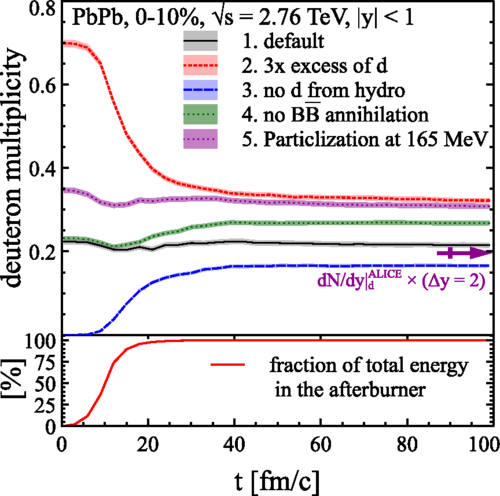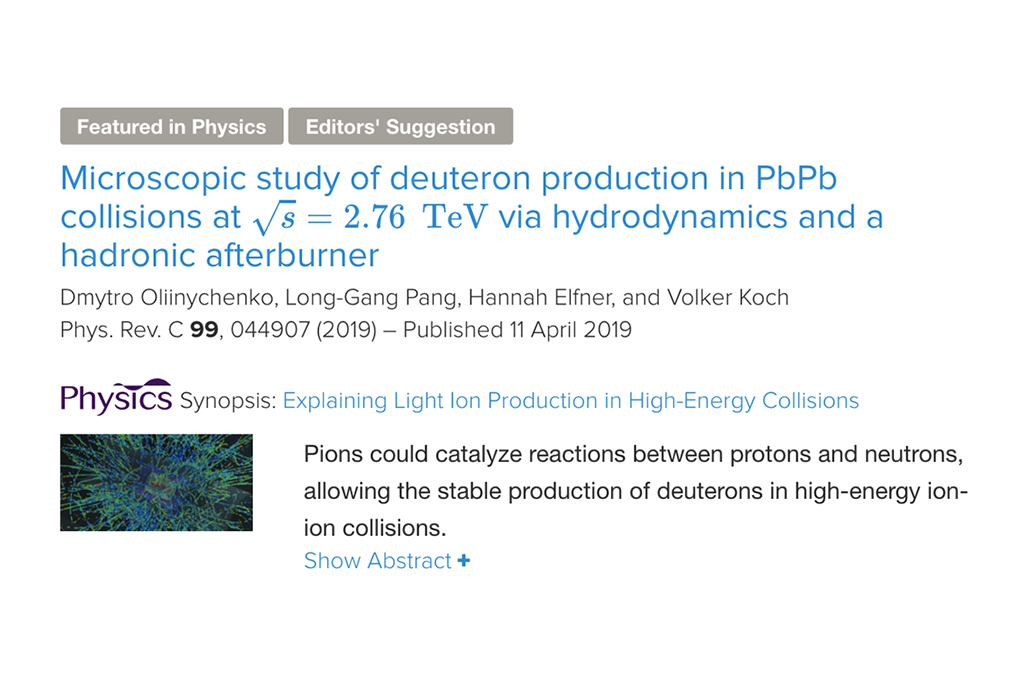Dmytro Oliinychenko, Long-Gang Pang, Hannah Elfner, and Volker Koch, Microscopic study of deuteron production in PbPb collisions at √s=2.76TeV via hydrodynamics and a hadronic afterburner, Phys. Rev. C 99, 044907 (2019)
The deuteron yield in Pb+Pb collisions at √sNN=2.76 TeV is consistent with thermal production at a freeze out temperature of T=155 MeV. The existence of deuterons with binding energy of 2.2 MeV at this temperature was described as “snowballs in hell” [P. Braun-Münzinger, B. Dönigus, and N. Löher, CERN Courier, August 2015]. We provide a microscopic explanation of this phenomenon, utilizing relativistic hydrodynamics and switching to a hadronic afterburner at the above-mentioned temperature of T=155 MeV. The measured deuteron pT spectra and coalescence parameter B2(pT) are reproduced without free parameters, only by implementing experimentally known cross sections of deuteron reactions with hadrons, most importantly πd↔πnp.
 Figure: deuteron yield (both in hydrodynamics and afterburner) versus time for the scenarios, described in the text. Bottom: relative amount of energy in the afterburner. This is to indicate, how much of the system is already treated by the afterburner.
Figure: deuteron yield (both in hydrodynamics and afterburner) versus time for the scenarios, described in the text. Bottom: relative amount of energy in the afterburner. This is to indicate, how much of the system is already treated by the afterburner.
Further readings: APS Physics, DOE NP Highlights
